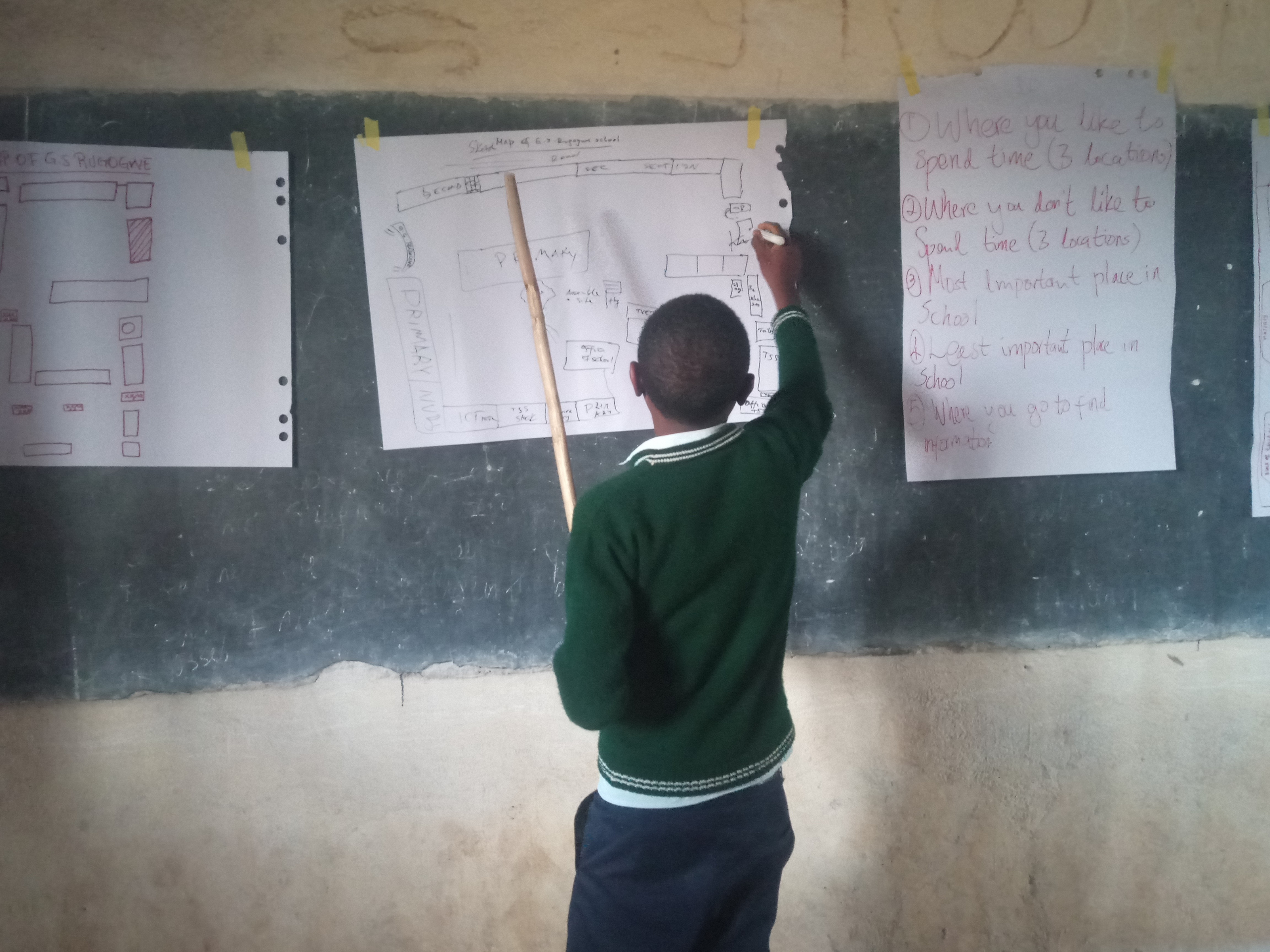Serving in the Ruhashya Sector, in Huye District at Rugogwe Secondary School recently hosted a remarkable initiative. This event united students for a meaningful and educational community mapping exercise. The activity aimed to engage students in understanding their local environment better, fostering a deeper connection with their community. Through this hands-on exercise, students learned valuable skills in mapping and data collection, which are essential for both academic and real-world applications.
The initiative not only enhanced their geographical and analytical abilities but also promoted teamwork and collaboration among the participants. This event highlighted the school’s dedication to practical, community-focused education, demonstrating how academic activities can extend beyond the classroom to make a tangible impact on students and their surroundings. The activity, known as community mapping, served not only as a learning exercise but also as a bridge connecting young minds to their surroundings in a meaningful way.
So what exactly is Community Mapping you may ask?
Community mapping is an innovative approach to engage participants in visually representing the geographic and cultural landscapes of their community. This exercise is part of the Human Centered Design Approach that CorpsAfrica trains its volunteers on so that they can use this in the community to better understand and identify any problems that the community may have. Using this activity in a school setting is a great tool because the students will be aware of what resources they have at the school that they don’t use to their full capacity and what resources they lack that they may want to have.
On this particular Wednesday afternoon at the Rugogwe Secondary School, the students gathered eagerly in a classroom, with their curiosity palpable. Volunteers from the Ruhashya sector were all present and we began by introducing the concept of community mapping, explaining its importance in understanding and improving their school campus.
This exercise is a hands-on learning exercise and it requires all the students that were present to take part actively and such, as Volunteers we guided the students through a hands-on session, starting with basic instructions on how to draw and interpret maps. The students were divided into groups, each tasked with mapping their school campus according to how they see the campus. This collaborative effort not only encouraged teamwork but also allowed students to share diverse perspectives on their community.
Creating the Map: The centrepiece of the activity was a large sheet of paper, soon to be transformed into a detailed map of the community. The students meticulously sketched various landmarks, from the school’s blocks and playgrounds to nearby roads and significant buildings. The map included:
Classroom blocks: This represented the classrooms where secondary school students engage in their academic pursuits. Highlighting the primary sections, showing the continuum of education within the community. Playground: An essential part of student life, where they engage in physical activities and sports.
Library and Staff Room: The intellectual and administrative hubs of the school, respectively.
As the map took shape, the excitement in the room was tangible. Students pointed out their favorite hangout spots, and other notable areas, adding personal touches to the map. This process not only enhanced their mapping skills but also reinforced their sense of belonging and identity among each other. The exercise concluded with a reflection session where students shared their experiences and insights. Many expressed a newfound appreciation for their school campus, understanding its layout and resources better. They realized the potential impact of such maps in planning and development efforts, from improving infrastructure to having other blocks at the school as needed.
A Bright Future: The community mapping exercise at Rugogwe Secondary School was more than a classroom activity; it was a journey of discovery and empowerment. By engaging in this activity and exercise, students not only learned valuable skills but also cultivated a deeper connection to their school and to each other.

